As a tourist in Sri Lanka, it’s always a splendid idea to visit Colombo. The only problem is there are hundreds of attractions in the city, which can be overwhelming for first-time visitors. To save you some stress and anxiety, we made a detailed guide on the 25 best places to visit in Colombo. Use our suggestions to create a concise itinerary or travel bucket list of where to go during your stay in the area.
Colombo, Sri Lanka’s capital, is the largest city on the island. It rose to prominence when the British Empire took charge of the country in 1815. Colombo remained the executive and judicial capital of Sri Lanka even after the country became an independent state. Today the influence of past colonial rulers, the Brits, Dutch, and Portuguese, is visible in its architecture, food, and fashion style. As an urban area, the city offers a mix of European and Asian cultures, which makes it more appealing to tourists.
Let’s explore the best parts of Colombo, from sacred temples and cultural landmarks to green escapes and shopping scenes.
Table of Contents
Toggle1. Gangaramaya Temple
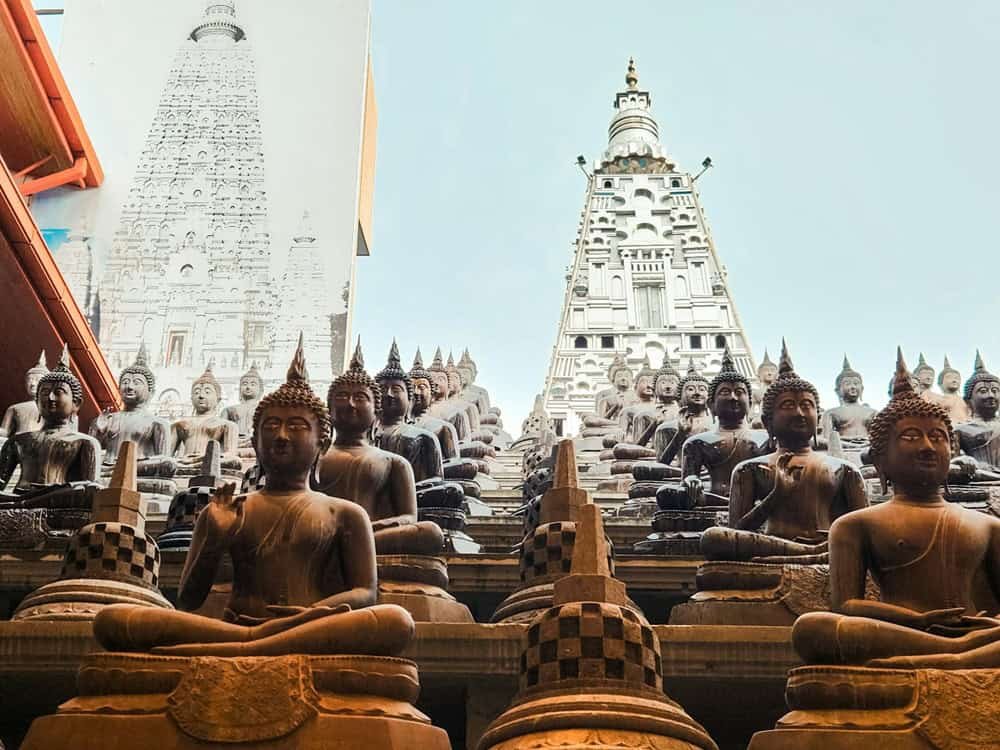
We’ll kick off our adventure with a trip to the most important temple in Sri Lanka. Gangaramaya Temple is one of the oldest religious sites in the country. This Buddhist shrine was established in the 19th century by a monk named Hikkaduwe Sri Sumangala Nayaka Thera.
Its main building is an architectural marvel inspired by a combination of Chinese, Thai, Indian, and Sri Lankan designs. Gangaramaya Temple has served as a home to some of the brightest scholar monks to come out of Sri Lanka. Today, it’s a place of worship and learning. Tourists come from all over the world to see the temple, irrespective of their background or religion.
2. Galle Face Green
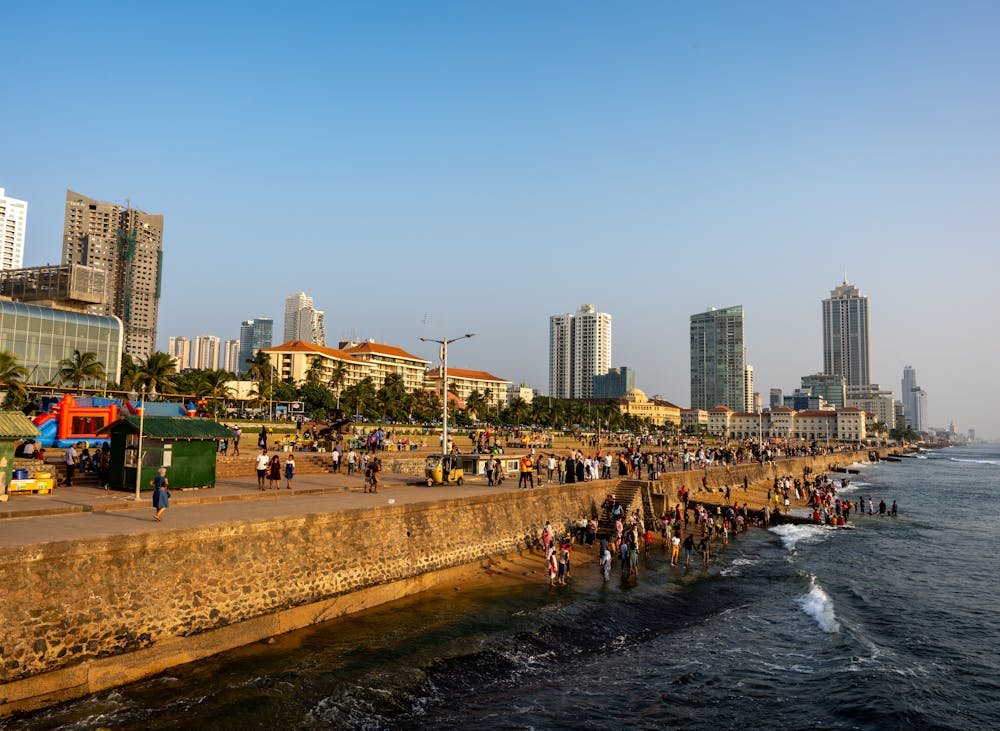
Imagine 12 acres of lush greenery stretching across an urban landscape. That’s what you will see when you visit Galle Face Green, one of the largest urban parks in Colombo. The area blends its natural beauty with a culturally charged atmosphere. People gather at the park every day for various activities, including picnics, community meetings, and festivals.
Galle Face Green was created by the British Empire in 1859. They used it as a track for horse racing and a field for other recreational sports, including golf and tennis. Despite the occasional crowd, the park has a serene environment, thanks to scenic views of the ocean and sunset.
On the weekends, Galle Face Green is littered with street food vendors selling prawns, seasoned mango slices, and cooked crabs.
3. Colombo National Museum
The Sri Lanka National Museum, popularly known as the Colombo National Museum, is the largest in the country. Opened in 1877, it showcases hundreds of years’ worth of history in the form of cultural artworks, religious artefacts, and archaeological objects.
Some of the most important attractions at the museum are the Toluvila Buddha statue, Heiyantuduwa Raja elephant skeleton, Kandyan monarchy regalia, and the National Museum Library.
4. Viharamahadevi Park
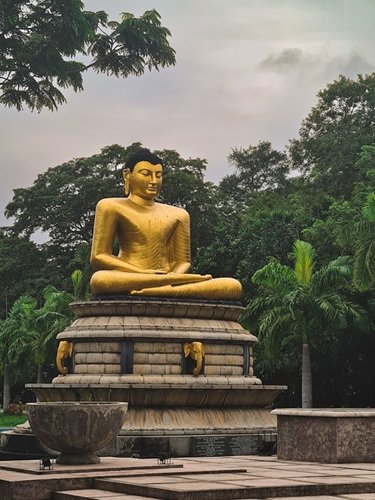
Step away from the frenzy of urban life and into the tranquillity of Colombo’s largest and most popular park. Formerly known as Victoria Park, the Viharamahadevi Park sits right next to Colombo National Museum. It got its current name from Queen Viharamahadevi, mother to King Dutugamunu, the first monarch to unite all of Sri Lanka.
This lush green space is a superb destination to visit with family. Besides the groomed green grass, the park also features palm trees and paved pathways. There is a large play area at the park where kids have fun. Popular facilities in this area include a playhouse, swings, a mini waterpark, slides, and pony rides.
5. Independence Memorial Hall
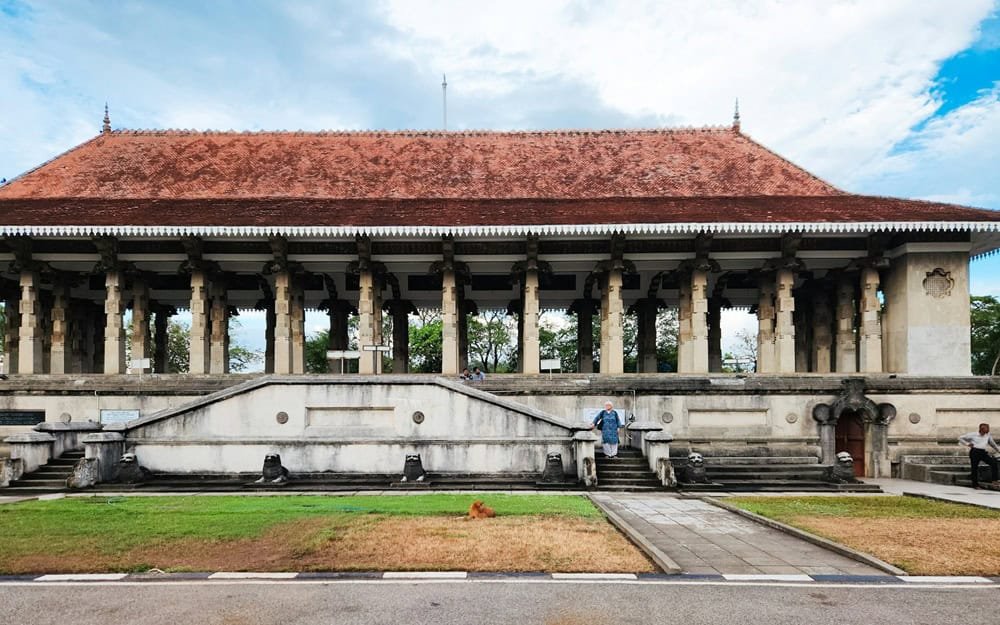
In 1949, barely a year after Sri Lanka gained independence from the British Empire, the Ceylonese governing body started to build a monument to commemorate the milestone. They called it the Independence Memorial Hall and completed its construction in 1953. Independence Memorial Hall serves as the venue for major religious and national events.
The hall is located in Cinnamon Gardens, one of the more affluent neighbourhoods in Colombo. The building’s architecture draws inspiration from the Magul Maduwa Audience Hall located in Kandy. It features traditional Ceylon designs and is surrounded by prominent lion statues. At the head of the building, you’ll find the statue of Rt Hon. Don Stephen Senanayake, Sri Lanka’s first Prime Minister. For more statues of notable Sri Lankan heroes, head over to the museum in the basement. Outside the building, there are several cafes and shopping malls.
6. Pettah Market
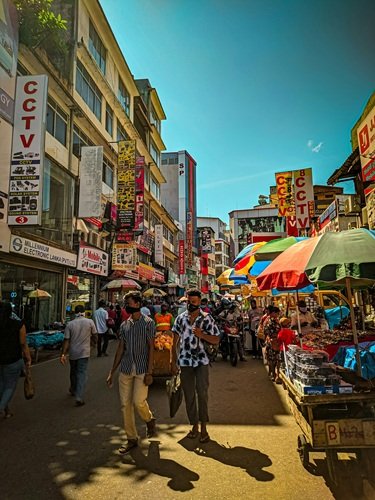
Manning Market, or Pettah Market, is a vibrant commercial and cultural hub where people go to buy fresh produce and fashion items. At the entrance to the marketplace lies the Khan Clock Tower, built a long time ago by a wealthy Parsi family.
The actual market consists of a network of streets. Each street harbours a collection of vendors and shops that sell the same category of items. For example, Olcott Street is where you go to find fresh fruits and vegetables, while Hetti Street is packed full of jewellery shops.
7. Beira Lake

At the centre of the city lies a man-made lake and another famous landmark. Beira Lake may be artificial, but its history is as authentic as it gets. In the 16th century, the invading Portuguese built the lake because they needed a defensive moat. Beira had other purposes over the centuries. For the Dutch, it held prison islands and farms. The British used it for yachting, rowing, and other recreational activities.
About 100 years ago, the lake covered 410 acres, but right now, it only occupies 160 acres. Beira is now a full-time tourist destination, featuring several attractions, including Lover’s Island, Seema Malakaya, and swan-shaped boat rides.
8. Seema Malakaya Temple

As one of the main attractions on Beira Lake, Seema Malakaya Temple stands out for its architectural brilliance and religious significance. This 19th-century Buddhist temple is an extension of the Gangaramaya Temple. Its main purpose is meditation and relaxation.
The structure you see today is actually a redesign of the original floating temple that sank in the early 1970s. The platforms on which the temple stands are connected to the mainland by pontoon bridges. You’ll find several shrines dedicated to Hindu deities on some of those platforms.
9. Mount Lavinia Beach

Overlooking the Indian Ocean, Mount Lavinia Beach isn’t exactly in Colombo. But it’s close enough for you to reach in a few minutes by road. The area called Mount Lavinia is a residential suburb known for its fantastic array of tropical beaches.
Mount Lavinia Beach is one of the best places to sunbathe. You can also swim in its waters when the waves are at their weakest. We recommend that you avoid swimming there during monsoon season.
10. Dutch Hospital Shopping Precinct
The Dutch built this building as a hospital during the colonial era. Today, it functions as a heritage centre, shopping mall, and dining area. The building still has a colonial architecture, but its interior has been greatly modified to suit its modern functions.
It features nearly a dozen shops, including restaurants, souvenir shops, boutiques, and retail stores. For a more refined experience, check out the fine dining options, art galleries, and live performances in the precinct.
11. Lotus Tower
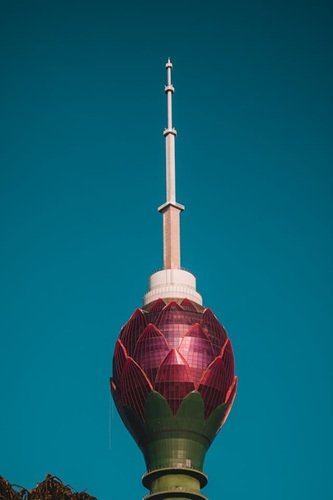
Next on our list is the Colombo Lotus Tower. This 350-metre-high building is not just the tallest structure in Sri Lanka; it’s also the tallest in South Asia. It’s located on Beira Lake’s waterfront, but you can see it from much further away.
The tower was designed to look like a lotus flower. Its main observation deck is located on the 29th floor and offers breathtaking views of the city. Other attractions in the building are a souvenir shop (ground floor), a rooftop promenade (3F), a banquet hall (26F), and a revolving restaurant (27F).
12. Dehiwala Zoo

The National Zoological Gardens of Sri Lanka, or simply Dehiwala Zoo, opened in 1936. Since then, it has served as a home to various land and sea animals. Most of the animals at the zoo are native to Sri Lanka. However, you may also find species from other regions of Asia.
There are over 2500 animals in the zoo, which receives millions of visitors per year, especially families with children. It covers a land area of 25 acres. The best sights of the zoo include a dance show performed by elephants, the butterfly garden, an aquarium, and walk-in aviaries .
13. Old Parliament Building
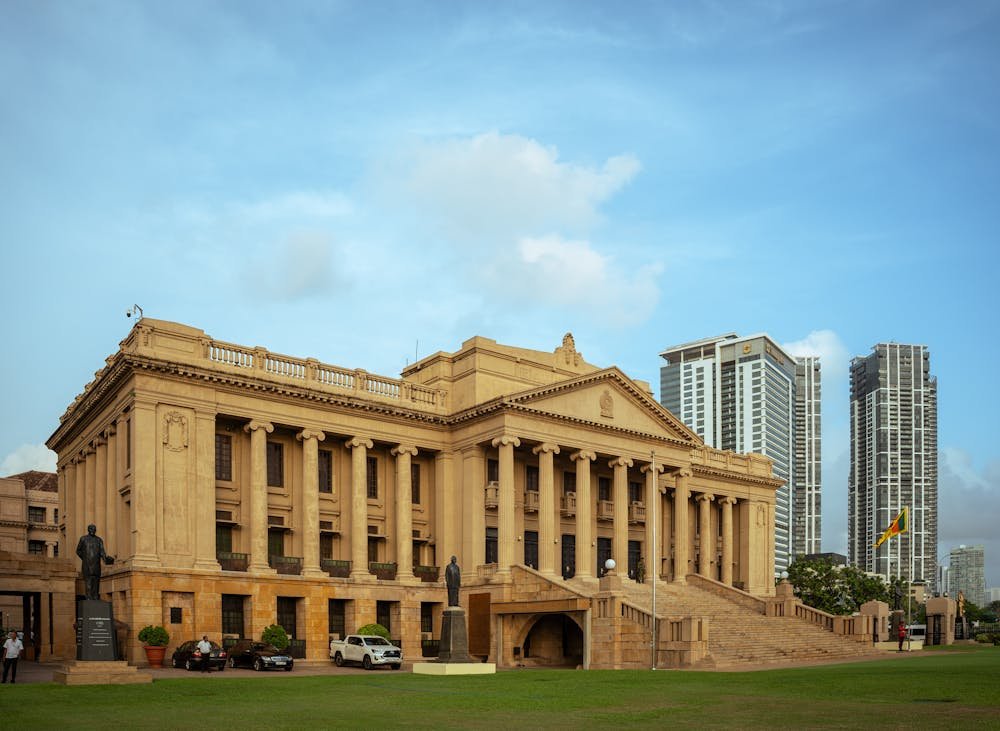
Home to the country’s Presidential Secretariat, the Old Parliament Building still holds some legislative significance, 95 years after its inauguration. It has a front garden that features bronze statues of prominent statesmen, including the country’s first, second, and third Prime Ministers.
Since the building is off-limits to the public, most tourists are content taking photos of its stunning Neo-Baroque architectural style.
14. Colombo Fort
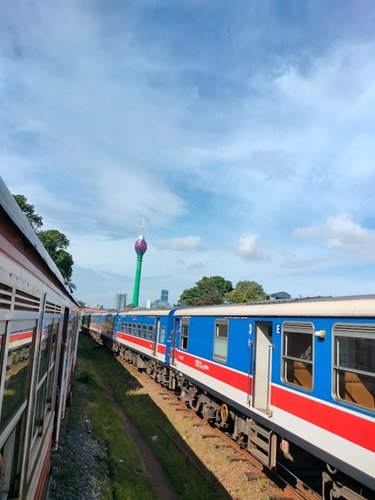
A trip to Colombo Fort, Sri Lanka’s main business district, will place you in the midst of a cluster of skyscrapers and high-rise buildings. Expats and business people who come in from all over the world stay at the many international hotels in the area.
The President’s official residence is located in Fort, Colombo. You’ll also find the headquarters of many banks and multinational companies there.
15. St. Lucia’s Cathedral
The Roman Catholic Archdiocese of Colombo is a Christian religious institution active in the city, and St Lucia’s Cathedral is the seat of the institute’s Archbishop. It’s located in Kotahena, a suburban area in Colombo.
The structure of the cathedral is akin to that of the churches at the Vatican City. It’s nearly 200 years old, making it one of the oldest parish cathedrals in the country. All are welcome to the cathedral, no matter their religious beliefs.
16. Nelum Pokuna Theatre
Nelum Pokuna Theatre is the central hub for performing arts in Sri Lanka. Opened at the end of 2011, the space serves as a venue for various shows, productions, conferences, and concerts. Its main auditorium can hold an audience of over 1,200 people. There is also an open-air theatre and a library in the building.
17. Arcade Independence Square
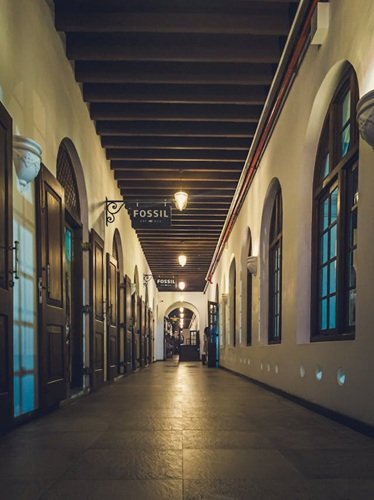
Take a break from all of the cultural sites and outdoor adventures to shop for high-end products. Arcade Independence Square is one of the largest shopping complexes in the city. It’s located in a cluster of buildings, which once served as a mental asylum and council building before their renovation. Their original colonial-era architecture still stands, but they have been fitted with modern technological amenities.
At Arcade Independence Square, you may shop for all kinds of items, ranging from electronics to clothing. There’s a cinema at the complex that displays popular movies. And when you feel hungry, stop by any of the diners, restaurants, and tea shops in the complex.
18. Khan Clock Tower
This famous clock tower is one of the main attractions of Pettah Market. It was built by the Khan Family of Bombay, an affluent migrant group that did business in Colombo. This family owned Colombo Oil Mills and produced much of the country’s oil in the colonial era. The four-storey-high tower serves as an indicator that you’ve entered the market.
19. Diyatha Uyana

Just outside of Colombo City lies Diyatha Uyana, a major park constructed on the waterlogged banks of the Diyatha Uyana river. The area surrounding this riverside park is called Polduwa junction.
Diyatha Uyana offers nice views of sunsets and the floating restaurant of Water’s Edge Hotel. Visit this restaurant for a taste of the local cuisine. Diyatha Uyana also has a fully equipped playground.
20. BMICH
The Bandaranaike Memorial International Conference Hall (BMICH ) makes our list of iconic landmarks because of its role in hosting events and special occasions for citizens of the country. The convention centre hosts several high-profile events every year, including weddings, meetings, and fairs. It features a concert hall that can accommodate 1,600 people.
21. Kelaniya Raja Maha Vihara
If you want to add a short day trip to your Colombo itinerary, you should make Kelaniya Raja Maha Vihara one of your stops. It is a Buddhist temple in Kelaniya, a suburb located 10 kilometres away from Colombo. Believed to be built on ground visited by Buddha himself, the temple is one of the country’s most sacred sites. It features 18th-century murals, a courtyard, and several Buddha statues.
22. Jami Ul-Alfar Mosque
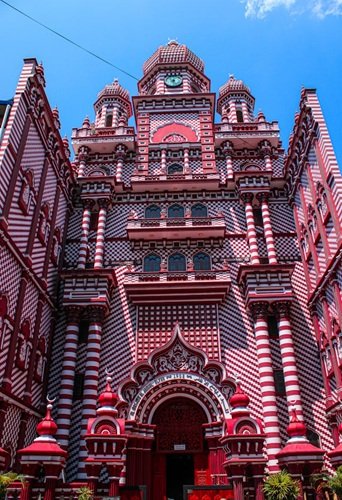
There is a large pomegranate-shaped structure in Pettah Market decorated with red and white colours. This structure is the Jami Ul-Alfar Mosque, and it’s a major tourist attraction in Colombo. The mosque was created in the early 20th century by the community of Indians who lived in Pettah at the time. Its unique shape and distinct colours make it visible from many distant points in the city.
23. Barefoot Café
Barefoot Store is a shopping ground for hand-woven designer bags, toys, and bags. Its main building in Colombo houses an art gallery, bookshop, and garden cafe. The cafe functions like a restaurant. Visit to enjoy a light meal, some drinks, and live jazz music.
24. Paradise Road Gallery Café
Paradise Road is a store featuring homeware and handcrafted decor. It also has the Paradise Road Gallery Café, where people go to dine and enjoy a beautifully designed interior. The site of the cafe used to be the home of the late Geoffrey Bawa, one of the greatest Sri Lankan architects to ever live. Enjoy intercontinental cuisine in the private dining room or see exquisite art pieces in the upstairs gallery.
25. One Galle Face Mall – Luxury Shopping
Spanning an area of over 490,000 square feet and housing seven floors, One Galle Face Mall has a claim to the title of Colombo’s largest shopping mall. The mall also has seven different restaurants on its rooftop. They offer customers the chance to enjoy fine food and take in the scenic views of the city.
Best Time to Visit Colombo
The best time to visit Colombo is from December to March. In those months, the entire city experiences minimal rainfall and maximum sunshine. This warm and dry weather will make exploring Colombo’s main attractions more convenient.
How to Get Around Colombo?
You will need some form of transportation to take you to and from the attractions on our list. The tuk-tuk, also known as a tri-shaw or three-wheeler, is the easiest way to travel around Colombo. Buses are also available to take you to major stops in the city. Most of them allow tourists to buy tickets from an onboard conductor. You can also get a private taxi or use a ride-hailing app. While convenient, the cost of taking multiple taxis in a day can add up quickly.
Where to Stay in Colombo?
Colombo has enough hotels and luxury resorts to cater to its expanding tourist base. If you want the cheapest options, head to the road facing the Colombo Fort Railway Station in the town’s centre. You’ll find several guest houses with shared bathrooms.
Contact Wander Tropics to book Sri Lanka tour packages.
FAQ
The top sights in Colombo are Gangaramaya Temple, Galle Face Green, Pettah Market, Mount Lavinia Beach, and Lotus Tower.
Colombo does not have a high rate of violent crimes. Hence, it’s relatively safe to visit. Stay mindful and avoid falling victim to potential scammers in the area.
2 to 3 days is generally enough time to explore the best parts of Colombo. You can see its main cultural landmarks and eat at several of its dining options.
December to March is the best time to visit Colombo. This period falls within the dry season, so you can take advantage of the low rainfall and regular sunshine.

